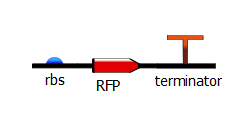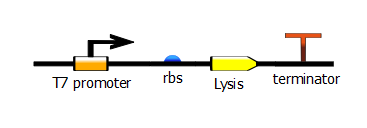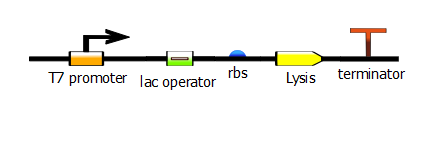Team:EPF-Lausanne/Our Project/T7 promoter variants/t7prom/making
From 2011.igem.org
(Difference between revisions)
(→Extension PCR: Part I) |
(→Extension PCR: Part I) |
||
| Line 11: | Line 11: | ||
== Extension PCR: Part I == | == Extension PCR: Part I == | ||
| - | The PCR product from the gene-specific PCR becomes the DNA template for the second PCR, which is oftentimes called the "Extension PCR". To find out more about the protocol for this PCR, click [[ | + | The PCR product from the gene-specific PCR becomes the DNA template for the second PCR, which is oftentimes called the "Extension PCR". To find out more about the protocol for this PCR, click [[Team:EPF-Lausanne/Protocols/T7-ext|here]]. This PCR adds the T7 promoter (or some variant thereof). |
[[File:t7_rbs_lysis_term.png]] | [[File:t7_rbs_lysis_term.png]] | ||
Revision as of 23:02, 21 September 2011
The Making of a T7 Promoter Variant
Gene-Specific PCR
The first PCR that is used to build a full T7 promoter variant is called a "gene-specific" PCR. The primers are chosen so as to add a ribosome-binding site (rbs) upstream of the reporter gene (here RFP or Lysis) and a terminator downstream of the gene. It is in effect a typical PCR.
Extension PCR: Part I
The PCR product from the gene-specific PCR becomes the DNA template for the second PCR, which is oftentimes called the "Extension PCR". To find out more about the protocol for this PCR, click here. This PCR adds the T7 promoter (or some variant thereof).
Extension PCR: Part II
 "
"




